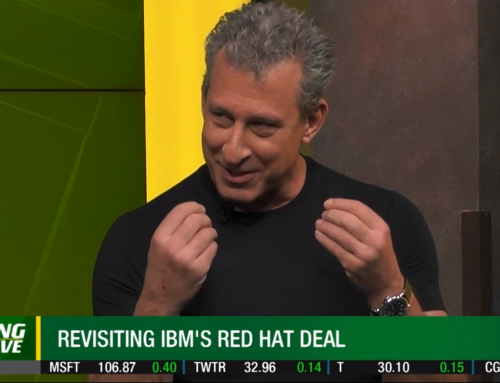Understanding FinTech #Transformation:
In this FIFTH of a five part video blog series Jim Jockle, CMO of Numerix sits down with Paul Rowady, Director of Research at Alphacution to discuss the concept of #Transformation. Jim and Paul provide their perspectives on the latest examples of transformation they’re observing in the financial services industry specifically around the cross section of IT spending trends, software vs hardware investment, human capital expense, IT infrastructure, data management and risk analytics innovations. The five segments cover:
- Defining #Transformation within Financial Services
- Quantifying #Transformation
- The Cost of #Transformation
- #Transformation and TCO: Hewlett Packard Enterprise & Deutsche Bank Case Study
- Investing in #Transformation: What’s the ROI?
Video 5: Investing in #Transformation: What’s the ROI?
Jim: Hi welcome back to Numerix video blog, I’m your host Jim Jockle. Joining me today Paul Rowady, director of research at Alphacution. Hey Paul.
Paul: Good to be here.
Jim: We’ve been talking a lot about quantifying transformation. In our last segment we just talked about kind of a use case or case example that you build around Deutsche Bank, fascinating so if you didn’t see that please check out our last segment. I want to talk and conclude our conversations on the following question: all this investment being made, from an institutional standpoint what is the lag. What is the lag time to start seeing return? I’m spending all this money in your example spending over 90,000 per person for a full time employee – we starting to see that decline into the 84,000 range of that investment. At what point in time is that going to ultimately hit the balance sheet in terms of ROI?
Paul: Yeah I think that in the case of the largest players if I had to bet it would be at least two years where you had enough confirming indicators that would be essentially eight quarters of performance and the volatility or the variance around that estimate has to do with business cycle. So when I am looking at the modeling of these banks and their technology spending patterns and developing a new language different kinds of analytics that allow us to not only give you absolute – to compare a company with itself, but to also compare a company with its peers and the broader ecosystem takes several years.
Our model for banks alone has 11 years of data for 58 if the largest banks in the world and several data points and analytics per model. So it’s quite a roust effort to look at what’s really going on below the surface. However, we can’t take away the business cycle. If some event happens if there’s crisis, some market moving event that can’t be muffled by quantitative easing, or a series of regulations or whatever the broader mechanism maybe you get these distortions of the analytics that are more business cycle related than technology strategy related. So therefore the broader answer is the lag could be 3-5 before you confirm that a particular investment has actually taken hold.
Jim: So how does that impact the thinking? We’re talking multi-billion dollar projected, individuals, regulators are now jumping in looking at operation risk around some of these particular projects – is there a lot of start stop in terms of this investment. If I’m CEO of X bank how am I selling that – don’t worry in 5 years from now the balance sheet is going to go crazy.
Paul: Well the complexity of these decision making challenges can’t be underestimated – it’s easy to be cavalier about judging a large and complex organization about how slowly it may move. In context of a startup that has this disruptive theme they have a blank canvas and can make all kinds of decisions and there’s no legacy to deal with. As the saying going it’s much easier to build anew than to renovate. Renovation is like – I used to say this when I was in prop trading myself we had a car on the track and we had to swap out the engine while we were running the race. That’s very difficult from a strategy perspective, and a management perspective. There is no luxury of start and stop. So you have to allow the car to continue to go even if the engine is not optimized or in some worst cases is defective and you have to plan in parallel – build things in parallel and switch over once you are confident the new functionality, the new gear in the engine can sustain the load while you pull this other legacy piece off the track. Now there’s a lot of people involved, a lot of politics involved as we’ve talked in previous segments – there’s a lot of cultural toxicity that comes in to these decisions it can’t be done in a vacuum. It’s very complicated.
Jim: Well Paul I want to thank you so much. Paul is director of research at Alphacution. Sitting down on his thoughts on quantifying transformation and two things I’ve learned today: Paul, big on TCO and understanding it and short on Ping Pong tables.
Paul: I’m very short on ping pong tables.
Jim: well if you didn’t catch that watch our earlier segments and that will be sure to bring you in on the inside of the joke. Thanks so much Paul.
Paul: Thanks Jim.



